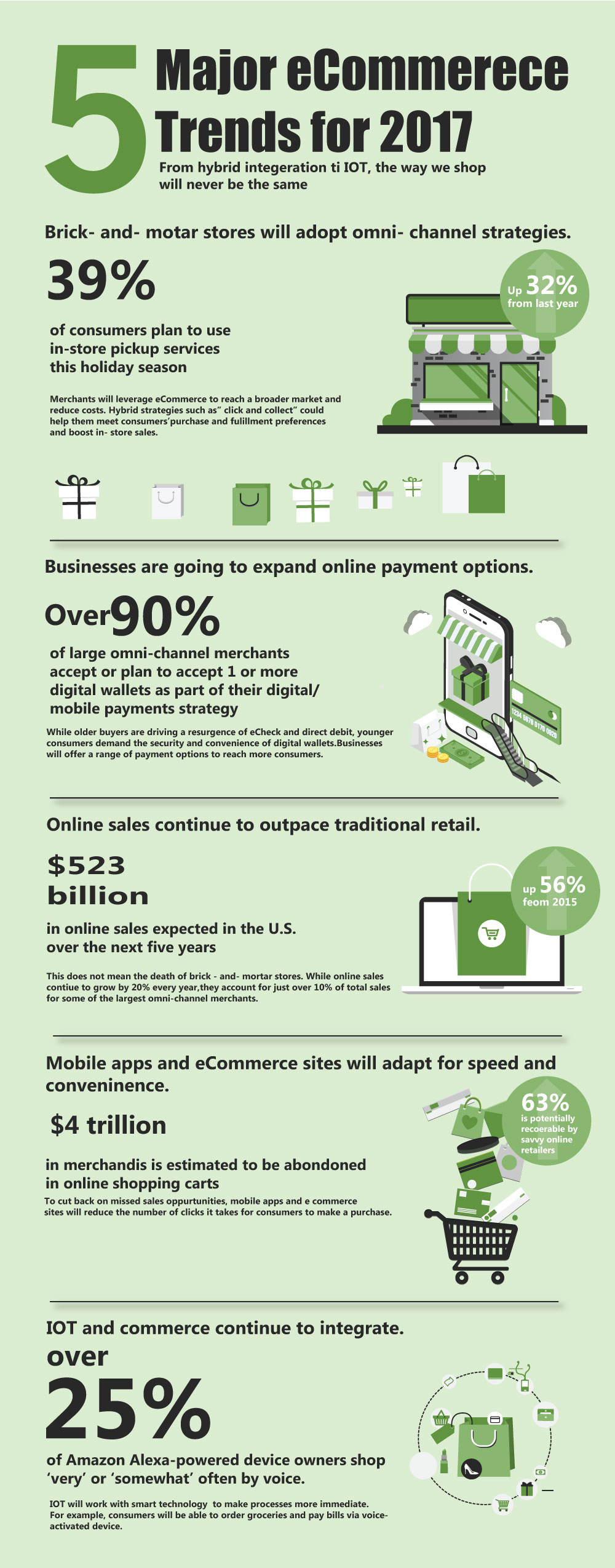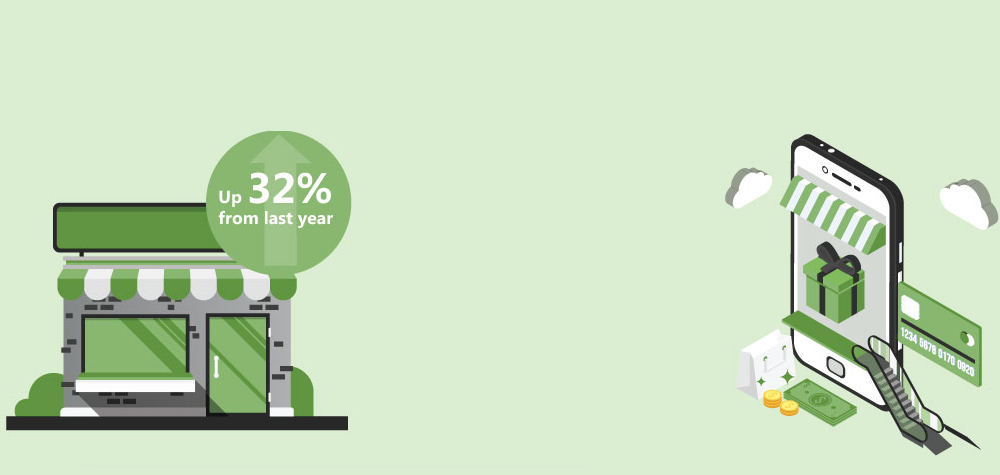Thanks to technology, the way consumers shop continue to evolve into something more enjoyable and convenient. This year is for greater adoption of some key eCommerce trends that we’ve identified in the infographic below.
Here’s what we think will change about the shopping experience for consumers and why retailers are a driving force in creating a shopping experience around an omnichannel strategy that integrates Internet of Things (IoT) devices and multiple payment options.
-
Table of Contents
ToggleBrick and Mortar stores
Brick-and-mortar stores will stop an omnichannel presence because of increasing preferences of consumers who prefer online shopping. It is estimated that 39% of consumers will use in-store holiday pickup this year; slightly above the 32% that used it in 2016. This is a great way for retailers to boost in store sales. This also adds convenience for shoppers while helping them lower costs by reducing delivery and logistics costs. The ease of use is also a way to draw in new customers.
-
Expansion of online payments
Businesses will expand their online payment options to include a broader range to serve different demographics. For example, 90% of retailers plan to accept or already incorporate one more digital wallets to help millennials that prefer this payment method. However, older buyers are seeking access to direct debit and eCheck options, so these will become more readily available. Don’t rule out the addition of cryptocurrency either!
-
Online Sales
Online sales will soar past offline retail revenues. It’s predicted that there will be $523 billion in online sales over the next five years with a growth rate of 20% per year. Right now, online sales only account for 10% of total retail purchases, so there is considerable opportunity ahead.
-
Mobile Apps
Mobile apps and eCommerce websites will adapt to add greater speed and convenience for shoppers. Right now, it’s estimated that $4 trillion is lost revenue because shopping carts end up being abandoned when a mobile or desktop site takes too long to load and complete the transaction. The focus right now and shortly is to reduce the number of clicks necessary to complete a sale to keep these customers from abandoning their shopping carts. This will be another way to drive those greater online sales noted in the third trend.
-
Iot
IoT and commerce will continue to integrate to speed the use of voice-activated devices for shopping. For example, 25% of Amazon Alexa-powered device owners note that they shop by voice command. Soon, more consumers will take advantage of the ability to order groceries, pay bills, and complete other transactions simply by using their voice.
Retailers will want to pay attention to these eCommerce trends and adapt their business models and strategies accordingly because this is the trajectory for consumers regarding their shopping and payment preferences. There is no turning back to the traditional ways of shopping, so it’s changes or loses your customers.
Thanks to available technology, including a wide range of tools, platforms, software and support from payment services providers, addressing these trends won’t be too complicated, expensive, or time-consuming. For more information on the eCommerce trends we see for 2017, please download the infographic shown below.














